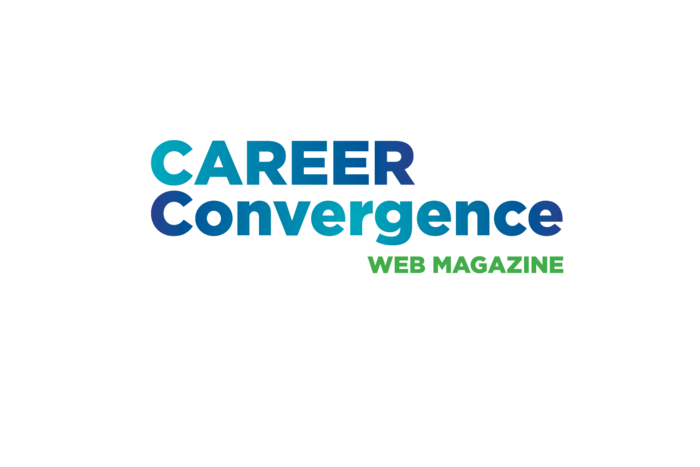04/01/2025
Paging Dr. TikTok: When Clients Self-Diagnose — Now What?
By Janine Rowe
Imagine that a company-sponsored Employee Assistance Program (EAP) career practitioner is seeing a client named “Tim,” who arrives to the session to discuss potential career changes. Tim works from home as a data analyst and feels isolated. He says he is preoccupied with the details of his work projects to the point of exhaustion and missing deadlines, and finds himself impatient with small talk. Tim has received feedback from his manager to be more of a team player.
Finding a TikTok with the caption: “4 things you do when you are on the Autism Spectrum,” Tim tells his career practitioner, “This is me,” because TikTok describes potential behavioral indications of the disorder as matching what Tim has noticed in himself. “I’ve been obsessed with math and logic figures for my whole life. I really think I am on the Autism Spectrum. Do you think I should change my career goals to do something less people-focused?”
How can a career practitioner effectively incorporate information from clients who bring a self-diagnosis like this into their sessions? First, it’s necessary to understand the popularity of using social media as a self-diagnosing tool.
The Role of Social Media in Self-Diagnosis
TikTok and Instagram have over three billion users worldwide, with a high percentage of them between the ages of 10 and 19 (DataReportal, 2024). A trend of self-diagnosis among adolescents and young adults was identified in 2021, associated with TikTok and Instagram content related to mental health and neurodiversity (Bobby & Sandhu, 2023).
Self-diagnosis involves identifying with a medical or mental health condition, often through anecdotal evidence or behavioral and symptom checklists, without formal diagnosis from a therapist or physician (Yeung et al., 2022). Self-diagnosis may seem helpful for several reasons (as anyone who has Googled symptoms on WebMD can attest), including:
- Connection to compelling online communities, personal anecdotes, and stories that provide validation
- Financial and practical barriers to seeking formal treatment, such as access to a provider or specialist, geographic barriers, or lack of health insurance
- Previous experiences of minimization or bias in prior help-seeking experiences
- Better understanding of the self, and ability to reinterpret present or previous struggles in a new light (Bobby & Sandhu, 2023)
Current neurodiversity trends reframe the traditional medical model of diagnosis: instead of focusing on the challenges of neurodiverse conditions, there is more attention placed on the unique strengths of these neurologic differences. However, online portrayals of mental health or neurodiverse conditions may be inaccurate and overgeneralized, relying on descriptions that are not necessarily pathological (for example, descriptions of “brain fog” or frequently missing deadlines as characteristics of ADHD). How can practitioners handle their client’s self-diagnosis disclosures thoughtfully, while staying within ethical and legal guidelines?
The Career Practitioner’s Role
Career practitioners must operate within their scope of practice; absent of formal mental health training and a valid state license, they should not attempt to diagnose or refute a client’s self-diagnosis. Instead, they can respond with curiosity and non-judgmental validation and collaboration. Remember, clients are likely sharing this information because the online diagnosis illuminates something important in their experience.
For some clients, self-diagnosis is a step toward gathering evidence and language to present to healthcare professionals, making for a smoother, more focused diagnostic process. Career practitioners should take care to practice within their scope and rely on their training and ethical codes to identify when a referral should be made, either for formal diagnosis or additional treatment. If a client seeks accommodations at the workplace or experiences poorly managed symptoms, practitioners should connect the client to appropriate referral sources. For examples of accommodation resources, see Working with Neurodivergent Clients, Part 2: Navigating Conversations Around Disclosure and Accommodations (Cross, 2024).
Practitioners can support their clients in a variety of ways that are productive and solution-focused:
- Self-advocacy: Assist the client in articulating how their symptoms or characteristics impact their career goals, productivity, or workplace interactions. Creating a script for these types of interactions with hiring managers, supervisors, and co-workers is often helpful.
- Career Tools: Identify career counseling tools that accommodate neurodiverse or disability needs: Part of this work may involve creating strategies for focus and organization, and holding briefer, more frequent sessions to accommodate energy and attention abilities.
- Collaboration: With the client’s consent, collaborate with members of their support team including their supervisor, HR manager, mental health professionals, academic coaches/advisors, and family members to create holistic support plans.
Putting it All Together: A Practitioner’s Approach to Tim's Case
A career practitioner can respond to Tim’s disclosure in an ethical, collaborative, and client-centered manner using the following strategies:
- Validate and Explore: Acknowledge Tim’s self-diagnosis with curiosity and respect. Ask how it impacts his career goals and what aspects of this identity resonate most. The following are potential validating and collaborative questions to guide this conversation.
- “I appreciate you trusting me with this information. What would you like me to know about how this impacts your career goals?”
- “It sounds like you’ve done a lot of reflection. How does this understanding influence what you’re looking for in a job?”
- “Your perspective is so important. How do you imagine we can incorporate these strengths into your career planning?”
- “Self-awareness is crucial in the career exploration process. Medical and mental health providers can help you know for sure whether you fit the diagnostic criteria. Have you connected with your [primary care physician or therapist] about your thoughts?”
- “Are there specific types of tasks or work settings that align best with your strengths or challenges?”
- “What resources and tools have you used before that have been successful in helping you navigate challenges related to this?”
- “What topics should we research together to better support you?”
- Identify Strengths and Needs: Collaborate to identify tasks and settings that align with Tim’s strengths, while addressing issues like hyperfocusing or challenging workplace interactions.
- Provide Tools and Resources: Use neurodiverse-affirming tools, strategies for organization, and career assessments to explore roles that match Tim’s analytical strengths.
- Educate on Accommodations: Share information on workplace accommodations and guide Tim toward a formal diagnosis, if needed for further support.
Empowering Clients Through Collaboration and Validation
Career transitions often prompt clients to reflect deeply on their identities and experiences, including exploring potential neurodiverse traits. By responding with validation, collaboration, and practical strategies, practitioners can empower clients like Tim to align their career paths with their strengths, address challenges, and navigate the workplace ethically and effectively.
References
Bobby, H., & Sandhu, A. (2023, May 3). ADHD on TikTok: Raising awareness or driving inaccurate self-diagnosis? BBC.com. https://www.bbc.com/news/newsbeat-65457044
Cross, A. (2024, May). Working with neurodivergent clients, Part 2: Navigating conversations around disclosure and accommodations. Career Convergence. https://ncda.org/aws/NCDA/pt/sd/news_article/562038/_self/CC_layout_details/false
DataReportal (2024). Global social media statistics. Retrieved December 22, 2024, from https://datareportal.com/social-media-users
Yeung, A., Ng, E., & Abi-Jaoude, E. (Feb. 2022). TikTok and attention-deficit/hyperactivity disorder: A cross-sectional study of social media content quality. The Canadian Journal of Psychiatry/Revue Canadienne de Psychiatrie, 67(12). 899–906. https://doi.org/10.1177/07067437221082854
Janine Rowe is a doctoral student in counselor education at the University of Rochester, in Rochester, NY. She is a licensed mental health counselor, a credentialed alcoholism and substance abuse counselor, a certified career counselor, and nationally certified counselor in private practice in Rochester, NY. Formerly president and vice president of the New York State Career Development Association (NYSCDA), Janine is the recipient of NYSCDA’s Early Career Professional award (2014) and the Rochester Institute of Technology’s Presidential Award for Excellence (2018). She was a participant in NCDA’s Counselor Education and Leadership Academies. Connect with Janine through her website at Talktojanine.com and at Linkedin.com/in/janinemrowe.



